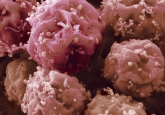From decentralized manufacturing to allogeneic therapy: an interview with Greg Roumeliotis, VP Global Business Development, Orgenesis, Inc.

During this interview Greg Roumeliotis (Orgenesis; MD, USA) discusses decentralized manufacturing in the context of advanced therapy and gives his take on allogeneic therapy. In addition, he also gives an insight into the cost of cell and gene therapy and whether he believes it can be made widely available in the current climate.
What are the pillars of successful decentralized manufacturing?
- The Orgenesis Point-of-Care (“POCare”) Platform is comprised of three enabling pillars: (1) a pipeline of licensed therapeutics that are processed and produced in (2) closed, automated technology systems, (3) across a collaborative network for treating the patient at the point of care.
- After promising new CGTs are identified, the POCare Platform could provide a rapid, globally harmonized pathway for these therapies to reach and treat at the point of care large numbers of patients at lowered costs through efficient, scalable and decentralized production.
- OMPULs (Orgenesis Mobile Production Units and Labs) are autonomous production units enabling rapid global deployment and democratization of CGTs. We expect that the OMPUL technology can overcome conventional processing challenges by enabling high quality, sterile, scalable onsite processing of CGTs
Some aspects of the therapy development and delivery pipeline need to remain centralized, using the Internet of things, to maintain a high quality and reliable GMP supply standards. It’s also not possible to do this without tremendously talented people, investigating and accelerating research, validation and approvals. All these factors come together to enable decentralized manufacturing.
How can quality be maintained in the context of decentralized manufacturing?
The cell and gene therapy sector has the benefit of being able to learn from other industries which have already trialed decentralized manufacturing. We have seen examples of decentralized finance; who would have thought that one of the most regulated industries in existence would be decentralized in this global agenda and culture? These examples include H&M, the global clothing brand, which has also recently started producing locally and numerous other global super brands.
There is a reason for this trend towards decentralized manufacturing and it’s because there are so many benefits. In the context of regenerative medicine, we can liaise with a range of experts and clinicians and we may get better prices and incentives by processing and manufacturing locally. There are challenges, but we have certain solutions available to us.
Why is decentralized manufacturing still relevant when the industry is moving towards allogeneic therapies?
Let me start by saying autologous cell therapies have a long track record, with proven efficacy. Allogeneic shows great promise, but is not there yet. However, as a company we are modality agnostic – indeed we have some allogeneic products in our pipeline.
Our stated goal has always been to bring these life changing treatments to patients as soon as possible. We expect that there will be both auto and allo products in the future, often the intricacies of the disease itself will dictate which method is advantageous.
Can these therapies be made widely available at the current cost?
It depends on the therapy in question. As you can see from our pipeline, we’re advancing into and beyond oncology, covering the inflammatory space and orthopedics. However, in the CAR-T space, for example, our evaluation and business plan aims for significantly less than currently available CAR-T treatments, which are between US$373,000 – 475,000. Whether we can offer it at ½, ¼ or lower of the current price is to be finalized, but we aim to offer significant cost reduction.
Our three pillars forge a platform delivering affordable, available, accessible cell and gene therapies and we know we can keep the cost down and also increase quality. We also need to create an ecosystem that provides space to breed new therapies. Take the smart phone as an example: whichever brand, the people creating them come from a range of companies and individuals. Some are developers, some are start-ups, some are young. The same is true for cell and gene therapy: we need a fertile environment to accelerate development. That’s why we have developed training for innovative candidates with no prior cell and gene therapy experience to deploy treatments to patients at POC; we call it Orgenesis Academy.
The opinions expressed in this feature are those of the interviewee/author and do not necessarily reflect the views of RegMedNet or Future Science Group.





